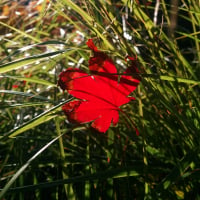This Forum will close on Wednesday 27 March, 2024. Please refer to the announcement on the Discussions page for further detail.
Woodlice
 micearguers
Posts: 646
micearguers
Posts: 646
This year I'm noticing a large amount of woodlice, basically everywhere. In the compost heap, in the soil, around plants, on stepping stones. I may just be noticing them more, or perhaps it is a result of accumulative mulching over the seven years that I have gardened here. Has anyone else noticed an increase in woodlice?
0
Posts
I live in west central Scotland - not where that photo is...
Q. Are woodlice pests?
A. woodlice feed mainly on decaying plant material, but they can also damage seedlings, bedding plants, peas, beans and carrots, for example, and soft tissues, such as cucumber plants, strawberry fruits and tomatoes. They usually prefer to enlarge wounds already inflicted by slugs, wireworms or other pests, in potatoes and bulbs, for example. Their mouthparts aren’t strong enough to deal with undamaged bulbs and tubers